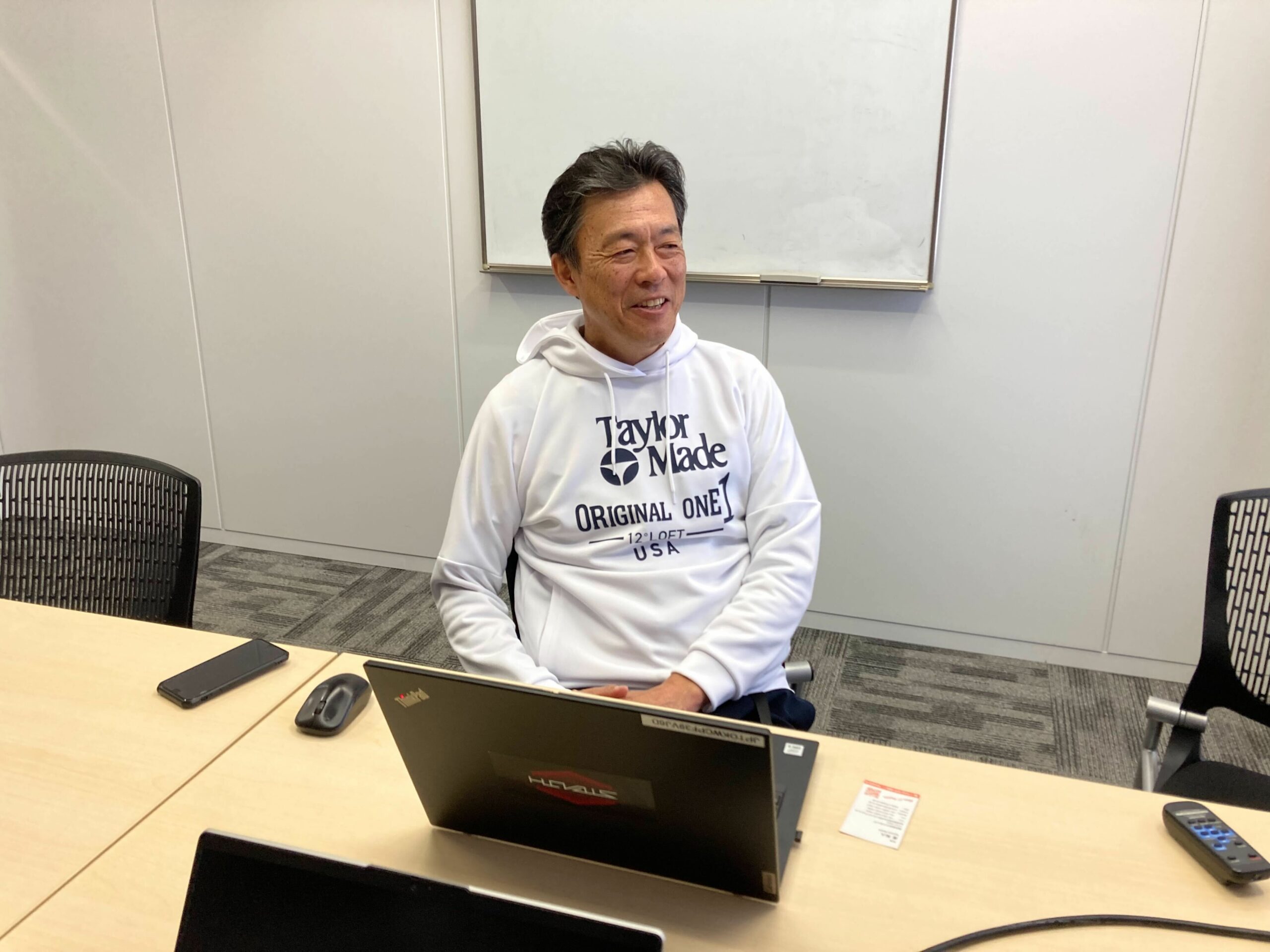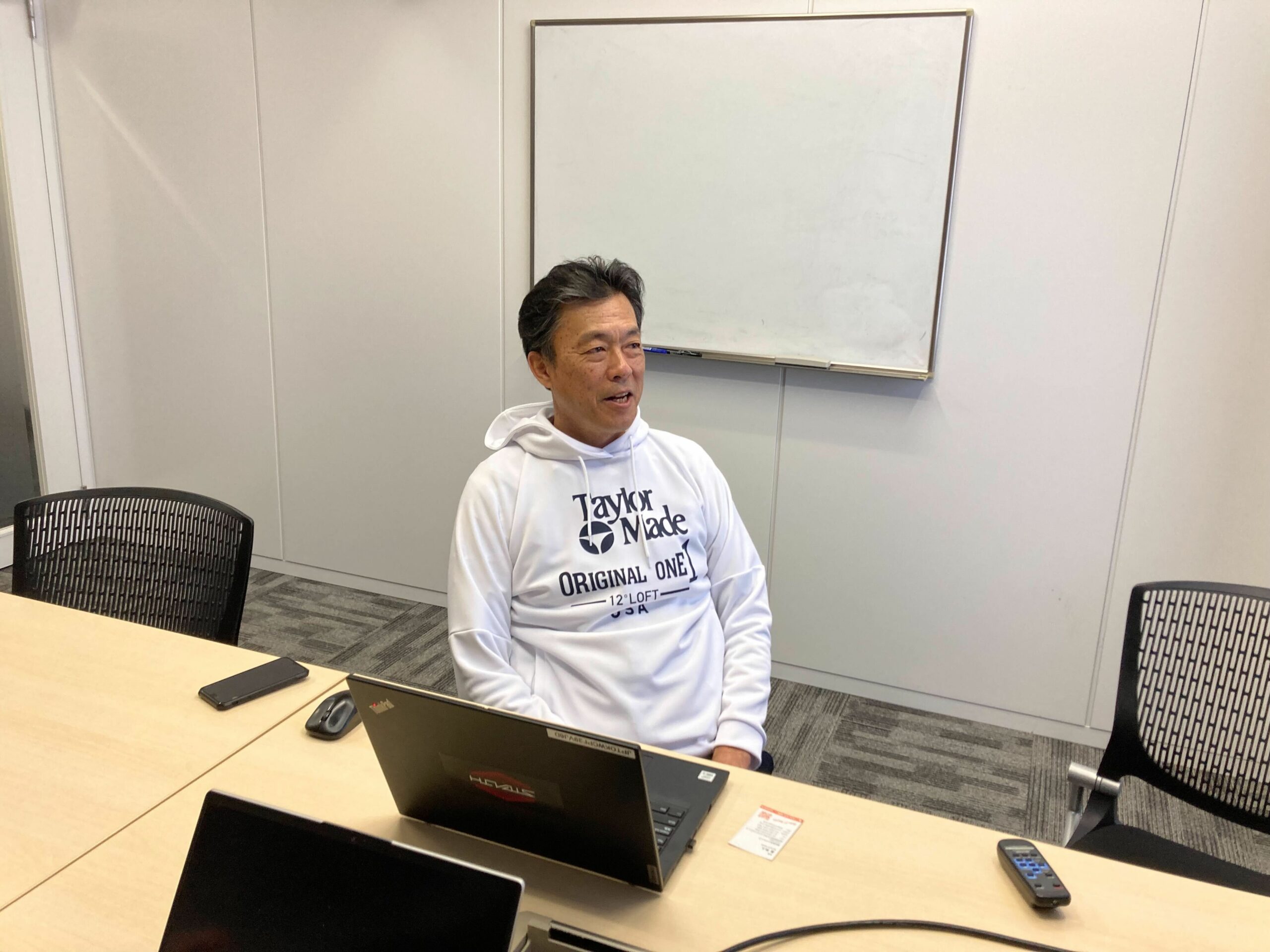We had a conversation with Mr. Tomoyuki Hagiwara, the Consumer Direct Manager at TaylorMade Golf Co.
Building an advanced system leveraging the strengths of a global company
The operation of the e-commerce platform began in 2005. At the start, the e-commerce platform was EC-CUBE, and the operation was on a small scale. At the time, there was a big business dealing with Adidas Golf brand.
The sales ratio at that time was about 50% for Adidas Golf and 50% for TaylorMade. The composition ratio of Adidas Golf alone was 50% for apparel, 30% for shoes, and 20% for accessories, with apparel making up a large portion.
After that, the Adidas Group introduced Demandware as an e-commerce platform, and TaylorMade also switched its platform to Demandware. After that, in Japan, around 2016, the platform was switched from EC-CUBE to Salesforce Commerce Cloud (formerly Demandware).
After upgrading to the Retail Architecture (also known as: SFRA) in September 2020, one of the various tools we started to introduce was Unisize. I think Unisize was the earliest of the tools we introduced.
Adding value with creative product development, aiming to differentiate from existing retailers
During the nearly 10 years I have been involved in this business at this company, I have felt since the Adidas Golf era that we need to at least do what general apparel e-commerce is doing such as providing size data to customers, or we will fall behind somewhere.
When we relaunched the brand TaylorMade, the product penetration rate in stores was overwhelmingly low, but from there we gradually increased the number of products, and now we have over 100 stores nationwide where we sell apparel.
The challenge as apparel is to increase the sell-through rate as much as possible without increasing the return rate of e-commerce, and with outfit proposals. Regarding the return rate, we have been able to keep it at a surprisingly low level after the introduction of Unisize. This low return rate is truly wonderful. For outfit proposals, we are using simulation tools called STAFF START and Botify. STAFF START started in February this year. Botify is scheduled to start full-scale operation soon. By introducing it, I think it will be easier to convey the atmosphere of the outfits to the user.
Regarding apparel, in October last year, under the responsibility of the head of the direct-to-consumer team, direct stores and e-commerce were integrated. Strengthening O2O is a recent issue, but the effort to propose outfits is one of those reinforcements. What the entire brand is currently strengthening is the development of collaborative products with various companies. The aim is to differentiate from existing retailers by adding value.
Also, apart from apparel, in the realm of golf clubs, we are developing color customisation exclusively for direct stores and e-commerce. Here too, differentiation from existing retailers is a major keyword. In addition, we are currently strengthening the trade-in of golf clubs. We are working to improve the customer journey and LTV in D2C, where the US is at the center as we are a global company. As part of that, we are excited to jointly produce e-commerce-exclusive items in the US, and we want to increase the value of the brand worldwide.

Decreasing Return Rate with the Introduction of the Size Gap Solution 'Unisize'
Apparel ranks fifth or sixth in terms of sales among the product categories that need to be strengthened. However, we must expand our apparel business. In our experience with handling apparel on e-commerce, the return rate has been an issue. We've been interested in introducing size recommendation solutions like Unisize for some time. The opportunity to discuss this with Makip came at just the right moment, leaving us with no hesitation to incorporate it. What sealed the decision was seeing many companies already implementing unisize at the time we started our discussions with you.
Another reason we decided to implement it was the loss of our major brand, Adidas. We found ourselves in a situation where we had to expand our apparel business under the brand TaylorMade. Through trial and error, we determined that unisize was the right solution. There are several competitors, but Makip started the size recommendation service, and we were able to discuss it at just the right time.
Large apparel companies also seem to struggle with size labeling, and we receive many inquiries about pants sizes. Most of the inquiries come from men, who predominantly comprise the golf industry. Few men understand the difference between garment size and suitable size. For example, they believe that if their own pants are 85cm, all pants of 85cm will fit them. So we had been receiving inquiries from customers who purchased according to the size label but found that the size didn't fit. Unisize has resolved this discrepancy in size perception.
We have received positive feedback from our staff and business partners who say that Unisize has solved various problems they faced when providing apparel in different scenes, such as not having a store nearby, not being able to try on items, and not knowing the size.
Strengthening Connection with Users through Direct-to-Consumer
When we considered what to do with e-commerce, for example, whether there's something we could do after online and offline, we progressed with the development to centralise our sales channels.
We already displayed store inventory, but the system was somewhat inadequate as the inventory linkage was not in real-time. We improved this by first collecting the inventory data from the stores, linking it in real-time, and displaying it online. Also, for items out of stock online but available in stores, we made it possible for customers to order and then pick up the items at the store. We packaged this whole process. We started operations less than a year ago, and this too is a system we developed in-house (we have not implemented it yet. We plan to implement it from the end of '23 to '24).
Our golf clubs have become number one in market share in the domestic market. Once you reach number one, it's not easy to increase the numbers further, so we see potential in golf balls, apparel, and accessories, where the market share is low. Going forward, we believe that strengthening the apparel business will remain one of our key sales pillars. We want to strengthen our communication with customers through both our own stores and e-commerce.
Our goal for this year is to keep the return rate from increasing on e-commerce while focusing on improving the sell-through rate. Besides size recommendations, we want to strengthen our fashion outfit proposals.

